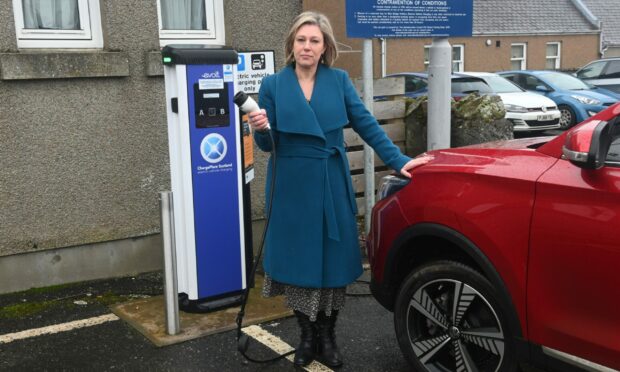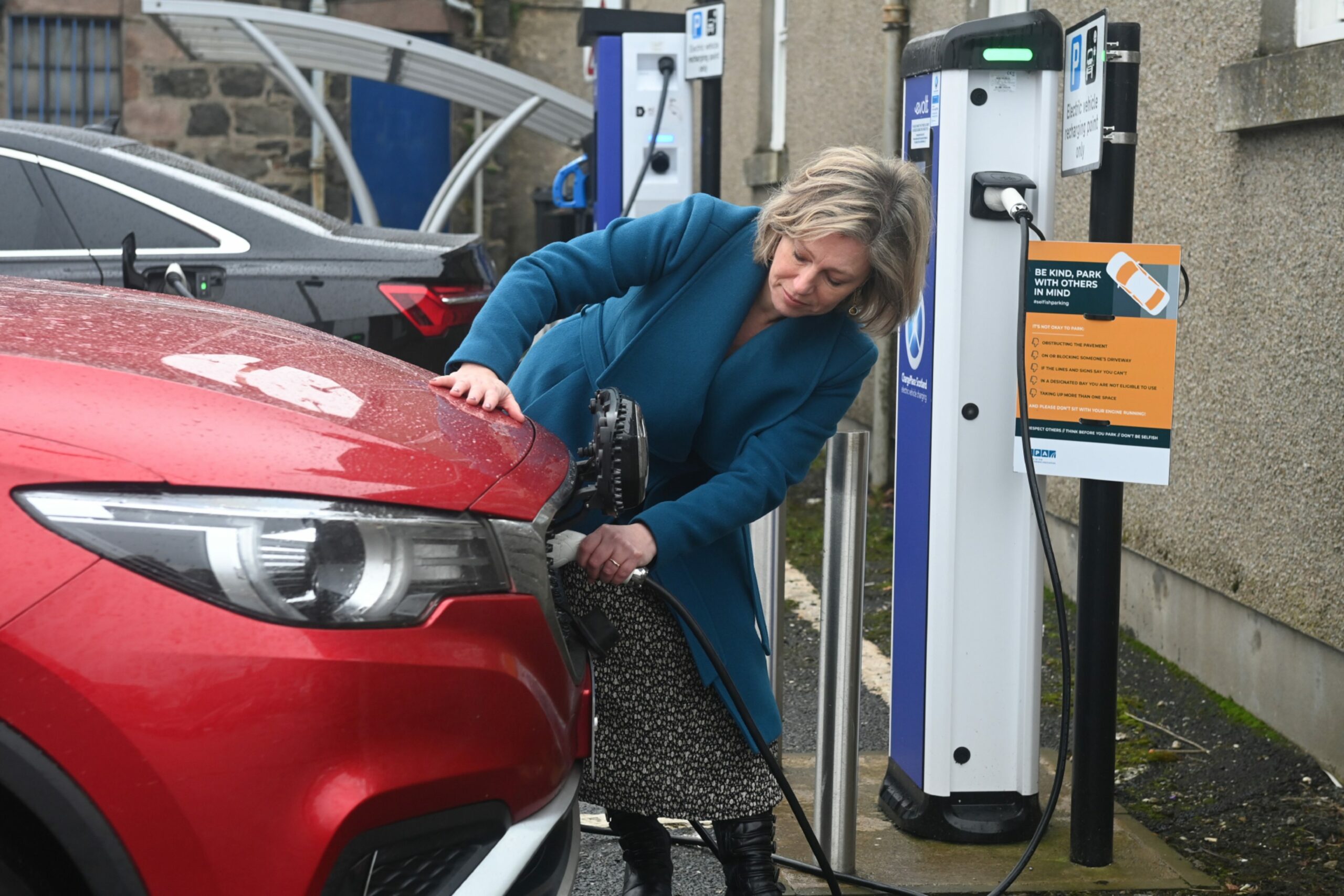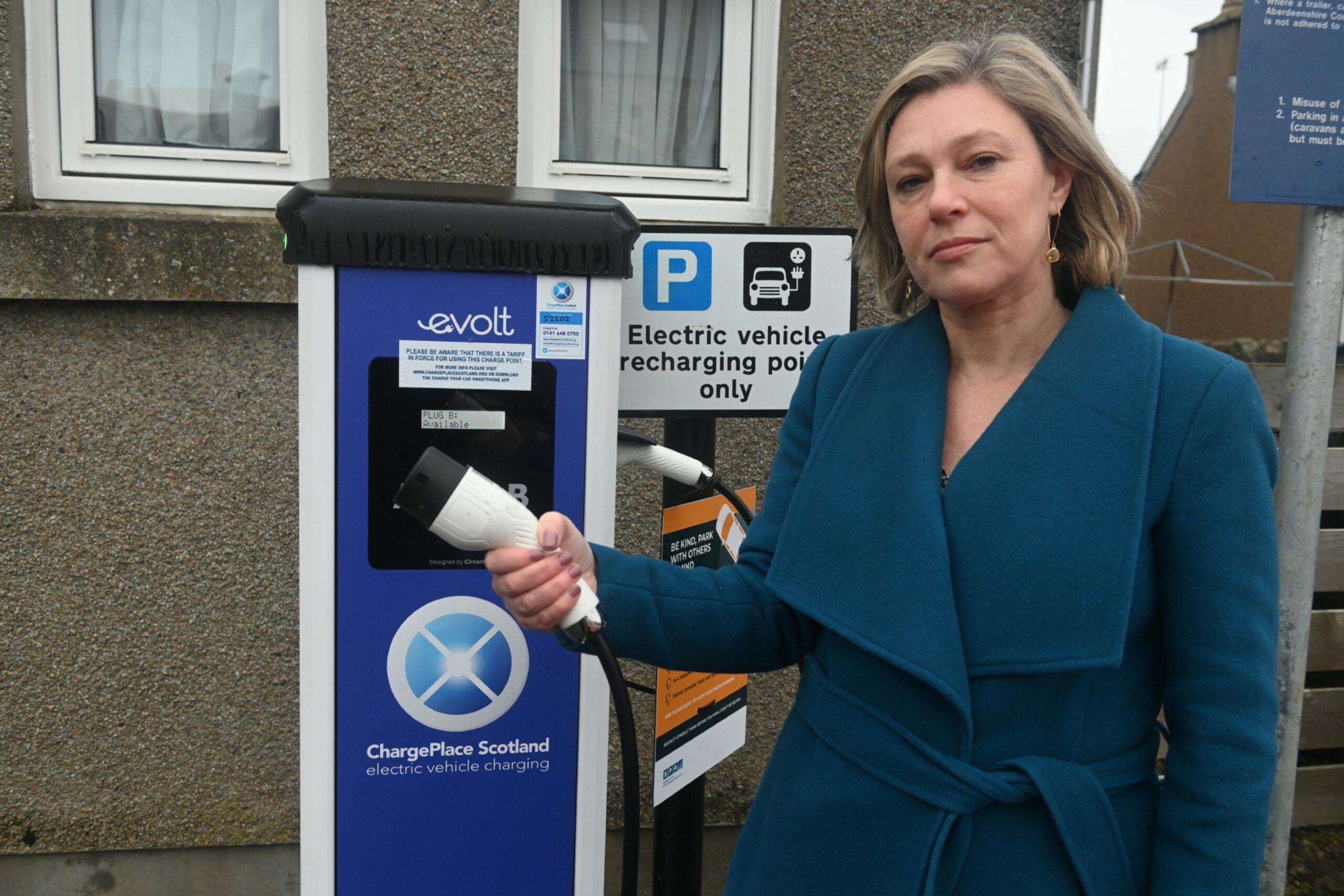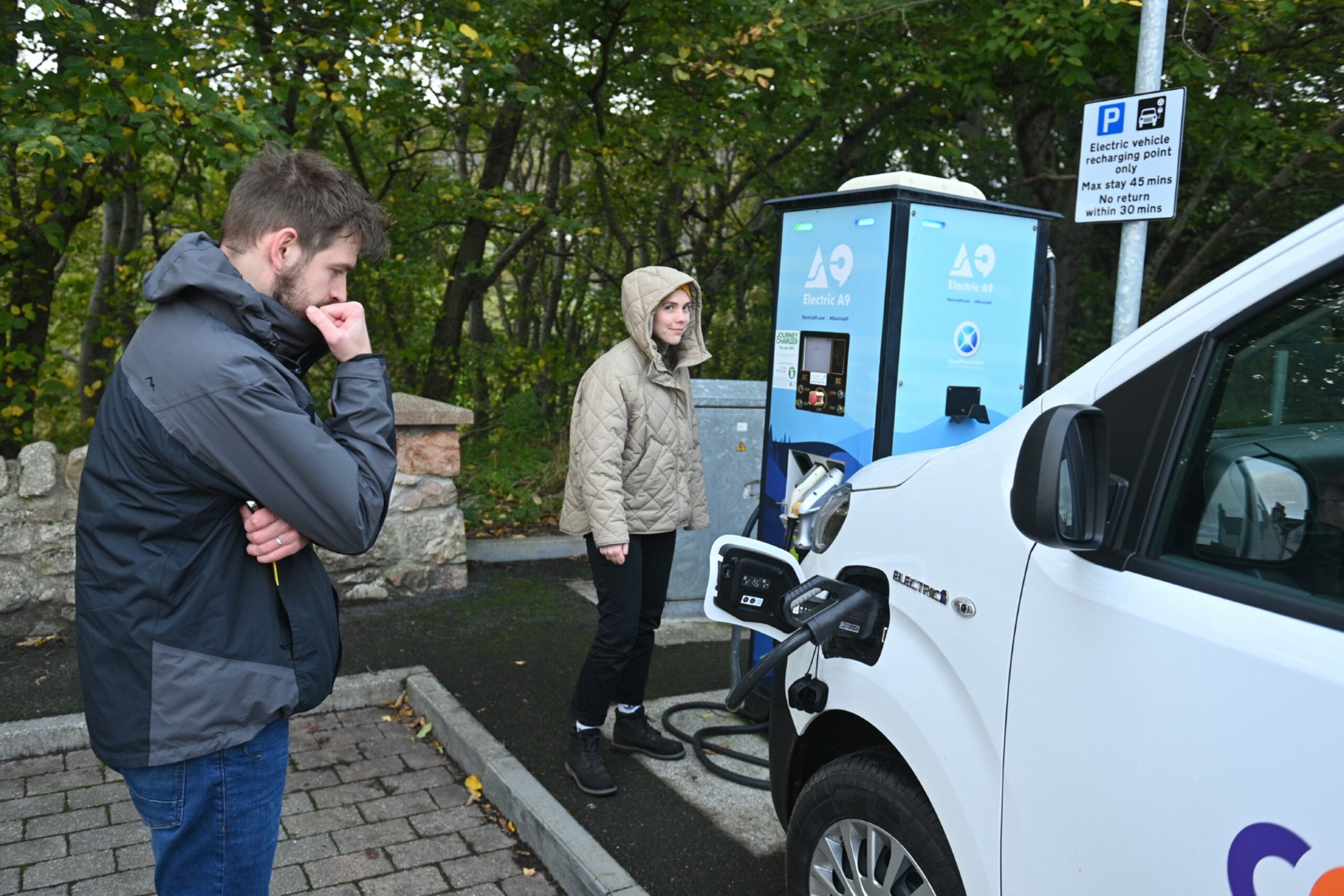Scotland’s new electric car charging points should be placed with women’s safety in mind, an SNP MSP has argued.
Gillian Martin, the MSP for Aberdeenshire East, has called on the Scottish Government to ensure future chargers get installed in public, well-lit locations.
She made her calls after the cabinet secretary for net zero, energy and transport Michael Matheson announced a new £60 million fund to improve public electric vehicle infrastructure in Scotland over the next four years.
The government anticipates the investment will “double the size of Scotland’s existing network of charge points” over the next four years.
Right now, there are more than 2,100 public charging points in Scotland.
‘The chargers should be located in safe areas’
In parliament, Ms Martin said the new fund is “hugely welcome”, but said the new chargers should be put in places where they are safely accessible.
She added: “As someone who has an electric car, it has become apparent to me in the past seven or eight months that, for lone female drivers, reliable rapid chargers are absolutely essential so that they do not spend hours alone in their car, and the chargers should be located in safe areas.”
Mr Matheson said he believed Ms Martin raised an “important point”.
He said: “I can think of a couple of examples of facilities that I have been involved in directly.
“One is Falkirk Stadium, which is a well-lit area that is covered by closed-circuit television cameras.
“The same applies at Castleview in Stirling, which is another new facility.
“Some older facilities are not in that type of location, and they can be poorly lit with no CCTV coverage.
“We need to ensure that the planning takes that into account.”
‘Women are worried about being alone all the time’
Ms Martin said that those deciding where to put new charging points might not realise the requirements of certain groups of people like women, because they may not understand their lived experiences.
She said that “women are worried about being alone all the time”, and this might not be something that crosses the minds of people designing Scotland’ charging infrastructure.
Ms Martin said: “Parking up somewhere where the lighting is bad isn’t good, but far worse than that is parking up at a place where there’s a rapid charger, and it’s not working.
“You’re faced with thinking well, now I have to go for the slower charger, and sit here for far longer in this dark place.”
She added: “I’ve had one hairy experience where a bunch of lads appeared and started kicking the charger when I was sitting in the car and charging.
“They were just young teenagers, I didn’t feel particularly threatened, but it really did make me think, hmm, at some point I’ve got to get out and unplug my car…”
Ms Martin explained: “My number one thing is for anyone maintaining any charger is to make sure they’re working, and have good lighting.
“The rapid ones need to be working, and they can’t be in places like industrial places with nothing else around.”
Will rapid charger rollout be rapid enough?
Last year, the Press and Journal drove an electric van from John O’ Groats to Glasgow ahead of COP26 to see what Scotland’s electric vehicle charging infrastructure is like for ourselves.
We found a number of chargers were broken, and some communities were only served by older, slower chargers, and not the more modern machines that can fill your battery more more rapidly.
Mr Matheson said on the expansion of rapid chargers in Scotland, the country “has one of the most extensive networks of rapid chargers of any part of the UK, and we are building on that with further investment in the public sector rapid charger network.”
He said: “On repairs, the contract has shifted to a new agency that is responsible for ChargePlace Scotland.
“By and large, most chargers that have a fault reported are repaired within 48 hours.
“There is an issue in that it sometimes takes longer than that, however, and that issue continues to be pursued with the charger maintenance companies. “





